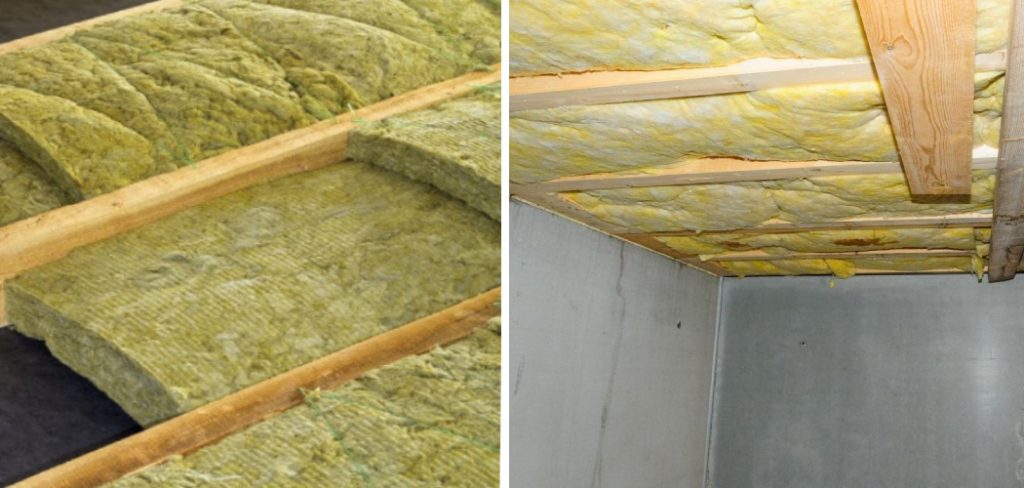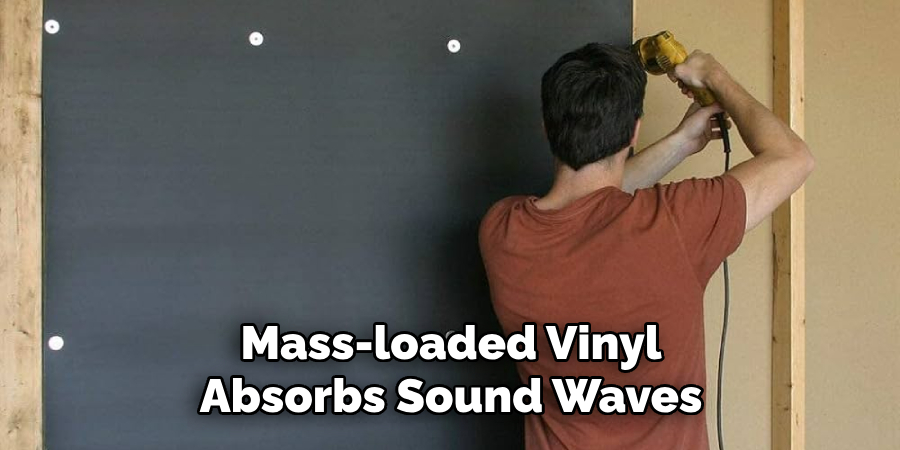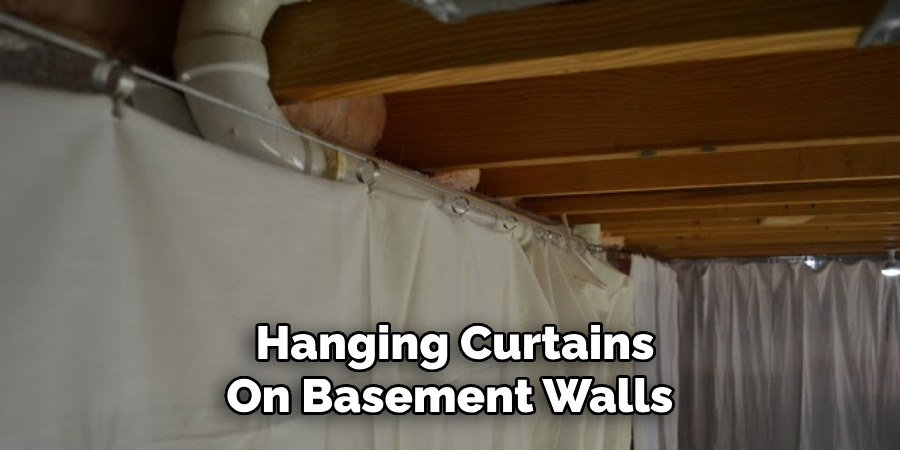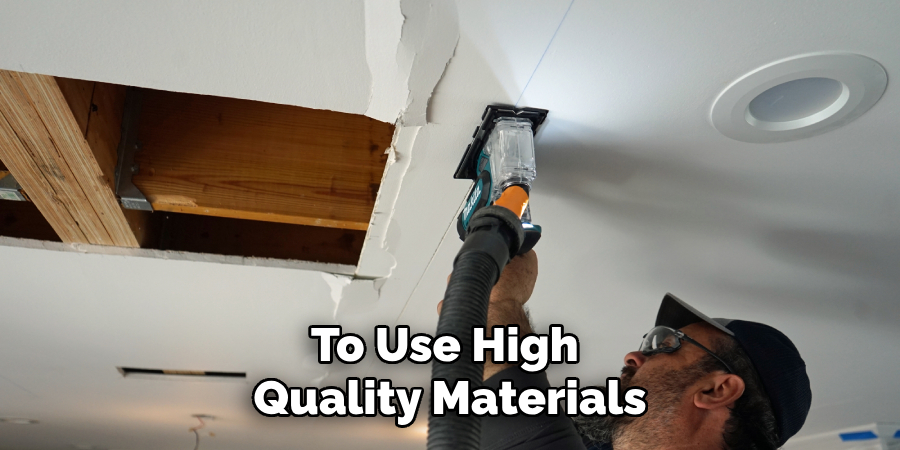Transforming your basement into a quiet retreat or functional living space often necessitates dealing with the challenge of noise from above. Whether it’s footfalls, conversations, or appliances, a soundproof basement ceiling can be the key to a peaceful oasis. Learning how to make your basement ceiling soundproof involves strategic planning and effective soundproofing techniques to minimize unwanted noise intrusion.

In this comprehensive guide, we’ll explore a range of methods for how to make basement ceiling soundproof, from installing soundproofing materials to soundproof drywall techniques and other ingenious tips. With a quieter and more serene basement, you can fully enjoy the newfound functionality and comfort of this space, free from the disruptions of the world above.
The Need for Soundproofing a Basement Ceiling
Basements are often used as recreation rooms, home theaters, or even bedrooms in some homes. However, one common issue that homeowners face is the noise coming from the floor above.
This can be particularly problematic if there are children playing or loud music being played on the upper level. It can also be an issue for those living in multi-family buildings where noise can easily travel between units. This is where soundproofing a basement ceiling becomes necessary.
Benefits of Soundproofing a Basement Ceiling
The most obvious benefit of soundproofing a basement ceiling is reducing noise levels in the lower level of the house. This can greatly improve the quality of life for those using the space, whether it is for relaxation or sleep. It can also have a positive impact on relationships with neighbors in multi-family buildings, as it helps to minimize noise disturbances.
Another benefit of soundproofing a basement ceiling is the added insulation it provides. This can help to regulate the temperature in the space and reduce heating and cooling costs. It also adds an extra layer of protection against outside noises, making the basement a quieter and more peaceful area.

Identifying Sources of Noise in the Basement
Noise is a common problem in many households, especially when it comes to basements. There are several sources of noise that can disrupt the peace and quiet of our homes, making it difficult to relax or focus on important tasks. Identifying these sources is the first step towards finding a solution for soundproofing your basement.
One obvious source of noise in basements is the HVAC system. The sound of the furnace or air conditioner running can carry through ductwork and vents, causing a constant hum or rumble in the basement. This noise not only interrupts activities but can also be quite distracting when trying to sleep.
Another source of noise is plumbing pipes that run through the basement ceiling. The flow of water and flushing toilets can create loud noises that echo throughout the basement. This can be especially bothersome if you have a bathroom or laundry room in your basement.
If you live in an area with heavy traffic, road noise can also seep into your basement. The sound of cars and trucks passing by can create a continuous buzz that is difficult to ignore, even when trying to relax.
In addition, any activities happening on the main level of the house, such as conversations, music, or television noise, can easily travel through the floor and into the basement. This can be a major disturbance for those trying to use the basement as a quiet space.

Lastly, basements with unfinished ceilings may have exposed joists and beams that can amplify any noise coming from above. This includes footsteps, creaking floors, and even the sound of furniture being moved.
10 Methods How to Make Basement Ceiling Soundproof
1. Install Acoustic Panels
Acoustic panels are a great way to reduce sound reverberation in your basement. These panels absorb sound waves, which helps to reduce the noise that echoes through the space.
They come in a variety of colors and sizes, so you can find one that fits your style and budget. Additionally, acoustic panels are relatively easy to install and can be done by most DIYers with minimal tools.
2. Use Soundproofing Foam
Soundproofing foam is another great option for reducing sound in your basement ceiling. This foam absorbs sound waves, which helps to reduce the amount of noise that travels through the space. It also comes in a variety of colors and sizes, so you can easily find one that fits your style and budget.
Additionally, soundproofing foam is easy to install and can be done by most DIYers with minimal tools. You can attach it to your ceiling using adhesive or screws, and it can even be painted to match your existing decor.
3. Add Mass Loaded Vinyl
Mass-loaded vinyl (MLV) is a heavy material that is often used for soundproofing ceilings and walls. MLV absorbs sound waves, which helps to reduce the amount of noise that travels through the space. It also comes in a variety of colors and sizes, so you can easily find one that fits your style and budget. Additionally, MLV is relatively easy to install and can be done by most DIYers with minimal tools.
To add MLV to your basement ceiling, you will need to first measure the space where you want to install it. You can then cut the MLV sheets to fit the area and attach them to the ceiling using a staple gun or adhesive. It is important to make sure that the MLV is securely attached, as any gaps or loose areas will reduce its effectiveness.

4. Install Resilient Channels
Resilient channels are metal channels that are installed between two layers of drywall or plasterboard to help reduce noise transmission between rooms or floors in a home or building. They work by decoupling two surfaces from each other, which prevents vibration from traveling from one surface to another. Resilient channels are relatively easy to install and can be done by most DIYers with minimal tools.
5. Seal Gaps & Cracks
Caulk or sealant should be used to fill any gaps or cracks around windows, doors, ducts, pipes, electrical boxes, etc., as these areas may allow noise to travel through them if left unsealed/unfilled. Caulk or sealant is relatively inexpensive and easy to apply; it can also be painted over once it has dried if desired for aesthetic reasons.
6. Install Carpet Squares
Carpet squares are an effective way of reducing noise levels in basements as they absorb sound waves rather than allowing them to bounce off hard surfaces such as concrete walls or floors .
Carpet squares come in various colors and sizes so you’re sure to find something that will match your existing décor while still providing excellent acoustic benefits. Additionally, carpet squares are relatively inexpensive, making them a cost-effective solution for homeowners who want better acoustics without breaking the bank.
7. Hang Curtains
Hanging curtains on basement walls is an effective way of absorbing unwanted sounds. The fabric absorbs sound waves rather than allowing them to bounce off hard surfaces, thus reducing overall noise levels. Curtains come in various styles, colors, fabrics, lengths, etc., so you’re sure to find something that will match your existing décor while still providing excellent acoustic benefits.

8. Use Soundproof Paint
Soundproof paint is specially designed paint that contains materials such as fibers, ceramic particles, polymers beads, etc., which help absorb sound waves rather than allowing them to reflect off hard surfaces.
This type of paint works best when applied directly onto bare drywall or plasterboard surfaces, as it will provide maximum coverage for optimal results. It should not be applied over existing wall coverings such as wallpaper or paneling as this may impact its effectiveness.
9. Add Insulation Batts
Adding insulation batts between joists before installing drywall will help reduce airborne noises, such as conversation, music, TV shows, etc., from traveling through walls/ceilings into adjacent rooms/floors. Insulation batts come in different thicknesses depending on their intended use ( e . g thicker batts for exterior walls ) but generally speaking, they should fit snugly between joists without leaving any gaps/spaces where air could escape/enter through.
10. Build A Drop Ceiling
A drop ceiling (also known as a suspended ceiling) consists of lightweight tiles suspended from metal frames below the actual ceiling level – this creates an air gap between the two layers which acts as an effective buffer against airborne noises such as conversation/music / TV shows etc.
Drop ceilings are not difficult nor expensive to install however they do require some basic carpentry skills so it may not be suitable for everyone depending on their experience level.

Things to Consider When Making Basement Ceiling Soundproof
If you are planning on soundproofing your basement ceiling, there are a few things to consider before starting the project. Here are some important points to keep in mind:
- Budget: First and foremost, you need to decide on a budget for your soundproofing project. This will determine what materials you can use and how much work you can do.
- Acoustics: Understanding the acoustics of your basement is crucial in determining the right soundproofing solution. Depending on the type of noise you want to block out, different materials and techniques may be needed.
- Moisture: Basements are known to have higher levels of moisture compared to other parts of the house. This can cause issues with certain soundproofing materials, so make sure to choose ones that are moisture-resistant.
- Access: Consider how you will access your basement ceiling. If it is already finished, you may need to remove some of the drywall or panels to install soundproofing materials.
- Building codes: Check with your local building codes and regulations before starting any soundproofing project. Some materials and techniques may not be allowed or may require special permits.
- Soundproofing options: There are many different soundproofing options available, such as acoustic panels, insulation, and drywall. Research and compare the pros and cons of each to find the best solution for your basement.
Common Mistakes to Avoid When Soundproofing Your Basement
If you’re planning to soundproof your basement, then it’s important to know that there are some common mistakes that people make which can compromise the effectiveness of their soundproofing efforts. Here are some things you should avoid doing when trying to make your basement ceiling soundproof.
1. Using Inadequate Materials
One of the most common mistakes people make when soundproofing their basement is using inadequate or improper materials. It’s important to use high-quality materials that are specifically designed for soundproofing, such as mass loaded vinyl, acoustic foam panels, and resilient channel. Using materials that are not designed for soundproofing can result in poor sound insulation and a waste of time and money.

2. Not Addressing Air Gaps
Air gaps are one of the biggest enemies of soundproofing, as they allow sound to travel through the smallest openings in your walls or ceilings. When soundproofing your basement ceiling, it’s important to make sure that there are no air gaps present. This can be achieved by caulking any cracks or holes and using acoustic sealant to seal any gaps around outlets or fixtures.
3. Neglecting the Importance of Proper Installation
Even if you have all the right materials, proper installation is crucial for effective soundproofing. This means following manufacturer’s instructions and taking extra care when installing materials such as insulation, drywall, and resilient channel. Improper installation can result in weak spots that allow sound to pass through, rendering your soundproofing efforts ineffective.
Conclusion
In conclusion, soundproofing a basement ceiling is possible with the right materials and techniques. Covering your insulation with acoustic tiles, utilizing dampening panels and constructing a suspended ceiling/sound barrier are just some of the many ways you can improve the soundproofing capabilities of your basement.
While this process may initially seem ambitious, there are countless tutorials online that can help guide you through the process. With patience, hard work, and basic DIY skills, it is entirely possible to make your basement soundproof in no time. So don’t delay! Start researching how to make basement ceiling soundproof today—it might be one of the most rewarding projects you ever take on!
